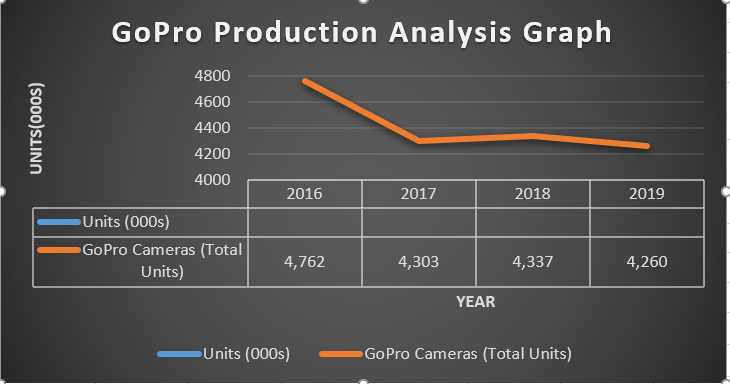GoPro is a U.S. corporation that manufactures and sells a wide variety of cameras. An analysis of the production will give the management of the company insights into how the business is performing. They will be able to determine the direction in which the organization is moving and ensure that they meet their set goals. The production levels in an organization depend highly on-demand in the market. Thus, the management has to ensure that they do a proper analysis of the demand in the market and match the production units with it. This will ensure that there is no shortage or overproduction of units, which will have financial implications.
From the production data provided for the years 2016 to 2019, the company recorded the highest production in 2016. The high production in this year could have been due to the high demand for the GoPro Cameras in the market (Hambrick, 2019). In 2017, the production units declined by 459,000 units. In 2018, the units produced increased slightly by 34,000 units. In 2019 the production further declined to the lowest level, with only 4,260,000 units being produced. This represented a reduction of 77,000 units from the previous year, an indication that the cause has to be investigated. The graph provided in figure 1 shows a clear image of what transpired in the company for the years under consideration.
Ultimately, it is evident that the production of GoPro cameras for the four years under consideration had been declining. The management of the company should analyze the cause of this and make the necessary recommendations that will ensure that the company gets back on track. The declining trend is a cause of concern for the shareholders and all other stakeholders of the company.

Reference
Hambrick, M. E. (2019). Investigating GoPro and Its Diffusion of Innovations. SAGE Publications: SAGE Business Cases Originals.